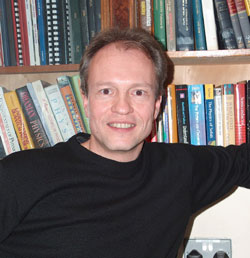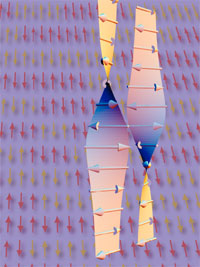Nature Physics Publication for UCD School of Physics Research Team
Everyone who has tried to fit a left-handed glove over his right hand or vice versa, has been confronted with the chirality of an object. Now a research team led by Dr Hans-Benjamin Braun, UCD School of Physics, has found that handedness or ‘chirality’ is an emergent property of quantum matter. Chirality comes from the Greek word 'kheir' for hand, and describes the character of an object or structure that is not superimposable on its mirror image — the human hand is just one of the many examples of chirality in nature. Apart from our left and right hands, examples include seashells and organic molecules such as lactic acids and DNA.

Dr Hans-Benjamin Braun, UCD School of Physics
This research is outlined in an article in the December 2005 print edition of Nature Physics along with an editorial outlining the significance of the research results, which are described by the Journal as being ‘of great importance’. The question how such handedness emerges in matter has been fascinating scientists since Pasteur’s discovery of chiral molecules. In condensed matter physics, a chiral arrangement of spins has been thought to be related to various exotic properties of certain materials such as high-transition temperature superconductors. However, the chiral nature of such spin states could never be experimentally observed.

Quantum fluctuations lead to the emergence
of chirality in spin matter
Now, a team led by Dr H.B. Braun has identified a system that demonstrates the emergence of chirality in a quantum magnet. In an effort combining both theory and neutron scattering experiments at the world’s most powerful neutron source in Grenoble (France), the researchers identified a model system that allowed them to obtain direct experimental evidence of how chirality emerges in a disordered quantum magnet.
The results shed new light on enigmatic systems of complex quantum matter such as high transition temperature superconductors and have implications for the development of quantum computing and spintronics, a crucial component of which is transporting spin; this experiment is the first direct evidence of such ‘spin current’.
Nature Physics Online Journal.
>> More News and Events
<< Back to Home
